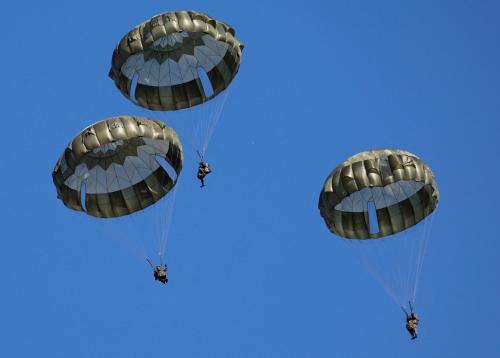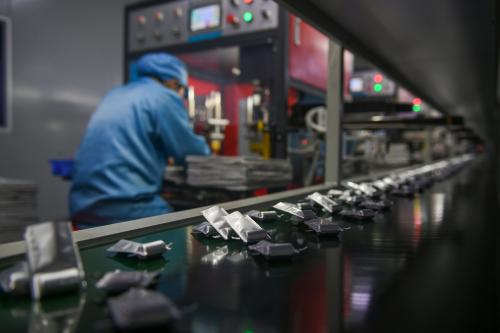The decision by the United States this week not to sell Taiwan advanced Arleigh Burke class destroyers armed with advanced Aegis combat management systems and other sophisticated weaponry was the right one at the right time. The Clinton administration chose to defer the sale pending a series of needed assessments of Taiwan’s air and naval defenses. Washington has not closed the door on such sales in the future. It would do so only after careful studies better establish precisely what systems are most appropriate to Taiwan’s defense requirements.
Meanwhile, Washington will sell Taiwan other long-range radars to complement the E-2T early-warning planes it had previously provided. This week’s robust arms package also included modern air-to-air, air-to-ground, anti-tank and anti-ship missiles. It also authorized a variety of training programs.
In addition, although this is not well known, the United States manages a number of active programs to upgrade the Taiwan military’s force structure and fighting abilities. The passage of the Taiwan Security Enhancement Act by the U.S. Congress would not necessarily improve the Defense Department’s ability to carry out these programs. It may in fact restrict the Pentagon.
Taiwan’s military needs to address problems in the realm of “software” more than hardware. It must streamline and decentralize command and control, accelerate training courses and operational tempo, recruit better educated personnel able to use sophisticated weapons, improve maintenance and readiness of weapons systems and better protect key military and civilian targets against attack.
In the hardware realm, Taiwan’s armed forces are having difficulty effectively using some of the advanced weaponry and equipment they previously acquired abroad. The air force has crashed several of its recently acquired F-16s and Mirage-2000s. The navy does not have sufficient training time at sea for its Lafayette, Knox and Perry class frigates, particularly in the areas of anti-submarine warfare, de-mining operations, counter-blockade tactics or open-water combat in the Taiwan Strait.
The ground forces are competent, but their training tempo is relatively slow and too infrequent. A recently leaked Pentagon study reportedly identified serious problems in the island’s air defense readiness. Moreover, all three services do not train in tandem enough, thus raising real concerns about their ability to operate together in time of conflict.
So Taiwan does not necessarily need more advanced weaponry. Rather, its military needs to learn to better use what it already has. Selling more and more hardware to Taiwan is likely only to compound existing absorption problems. It would also be destabilizing to the cross-strait military balance and politically disruptive to U.S.-China relations, and therefore to regional security.
Most experts agree that Taiwan has sufficient weaponry and forces to repel an attempted naval blockade, air attack or amphibious assault from the Chinese mainland. But this judgment has as much to do with China’s offensive weaknesses as it does with Taiwan’s defensive strengths.
But Taiwan’s security is increasingly being undermined as China modernizes its conventional forces and orients its procurement and training almost single-mindedly on achieving the necessary capabilities to undertake a range of coercive measures against the island. Time is not on Taiwan’s side, and by the end of the decade the conventional balance of forces is likely to tip in Beijing’s favor.
There is no doubt, though, that Taiwan faces a present and increasing threat from Chinese short-range ballistic missiles deployed opposite Taiwan.
While some Patriot-type anti-ballistic missile systems and some form of sea-based theater missile defense system would provide Taiwan with a sense of psychological security, they would be nowhere near sufficient to counter a saturation attack of Chinese missiles. In fact, there are few effective defenses against cruise missiles.
To meet this present danger Taiwan undoubtedly needs to acquire a combination of improved anti-ballistic missile batteries and improved early-warning capabilities. Washington and Taipei must decide precisely which combination will be most effective.
The answers should be provided by the studies to be undertaken in the coming months by the United States and Taiwan militaries. Then appropriate decisions can be made to sell what is necessary to meet Taiwan’s real defense needs.
But selling Aegis now would be putting the cart before the horse.
The Brookings Institution is committed to quality, independence, and impact.
We are supported by a diverse array of funders. In line with our values and policies, each Brookings publication represents the sole views of its author(s).



Commentary
Op-edWhat Taiwan Really Needs
April 22, 2000